Simon Parkes bought Brixton Academy for just £1 in 1983: the rest is history. Luke Massey caught up with Simon to find out more about his incredible journey.
Having run one of the UK’s most iconic music venues, Simon Parkes has seen more than his share of historic moments: from the sublime to the surreal, to the outright terrifying.
His new book Live At The Brixton Academy: A Riotous Life In The Music Business is an aptly titled romp through these memories – relayed to you like a dizzying night in the pub with Simon, regaled by tales so tall it’d be easy to shake them off as make-believe were they not so well documented and so compellingly told.

Live At The Brixton Academy reads like a litany of magical moments: from anti-apartheid concerts with Winnie Mandela and Jesse Jackson addressing a thronging crowd alongside Afrika Bambaataa and the Jungle Brothers, to the bizarre backstage demands of Grace Jones, to the Smiths final concert, the Clash tearing it up, and acts like Run DMC, David Bowie, The Pixies, Fela Kuti, Bob Dylan, Sonic Youth and The Rolling Stones gracing the stage.
Parkes also includes some touching and wry nuggets in the book about his personal life: ‘Mum was a committed campaigner for animal welfare. Dad shot pheasants. They were an odd couple in many ways.’
And it is these elements which provide so much flavour for what was to come. How did Simon Parkes, as a 23-year-old, end up buying a rundown old cinema in 1983 for just £1?
‘When I rocked up to Brixton in 1983, it pretty much blew my mind.’
I spoke to Simon to find out more about his earlier life and his incredible journey.
‘Well, I grew up in a well off family in rural Lincolnshire. So about as far from Brixton as it was possible to get in that era. It was a privileged upbringing and very mono-cultural, so when I rocked up to Brixton in 1983, it pretty much blew my mind.’
‘My mother was prescribed the drug Thalidomide while pregnant with me, and I was born missing half my left arm. My family was very no-nonsense about the whole thing, the attitude was very Northern – ‘just get on with it’ – which was great. I was never allowed to consider myself disabled and just figured out my own ways of doing things. Kids at school used to make fun, so I had to knock some heads together and draw the line. I guess it made me fight a bit harder – a good preparation for dealing with the Brixton gangsters when running the Academy.’
It’s clear that music had always been in Simon’s veins. ‘I loved music. I was totally obsessed,’ he tells me. ‘From the time I went to my first gig, which was Chuck Berry at the Rainbow in Finsbury Park at 16 years old, that’s all I was interested in.’
‘I had a friend who wanted me to go into business with him and buy the Edinburgh Playhouse. That deal fizzled out, but it planted the idea of running a venue in my mind. Then I got a call about this derelict venue in South London – I walked into the old Brixton Astoria Cinema, then a derelict building, and just fell in love.’
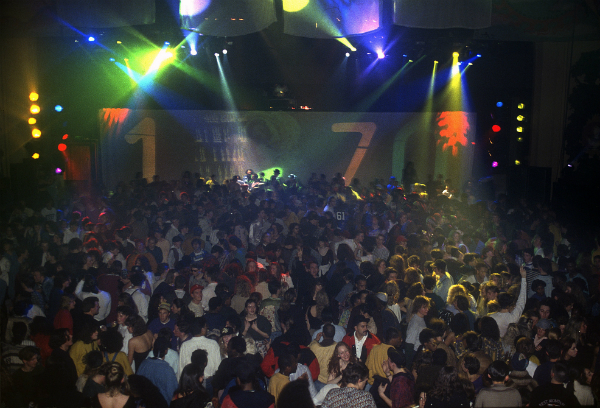
Unshakeable belief
The fact that Parkes was able to obtain this building for just £1 and not only establish a venue which worked, but which became one of the most successful music venues in the UK is testament to his self-belief, his commitment, and an element of cavalier abandon which came into play throughout his tenure at the Academy and resonates throughout the book.
‘From the moment I first walked into the building I was fixated. I had this totally unshakable belief that if I could get this place I would put on the most amazing gigs. The only problems being that I was 23 years old with no collateral or music business experience.’
‘I managed to blag a meeting with Watney, Coomb, and Reed – the brewery that held the lease on the building. They offered to sell me the lease for £120,000 – which I didn’t have. So I made them the offer that if they sold me the building for £1, I’d sell their beer exclusively for ten years.’
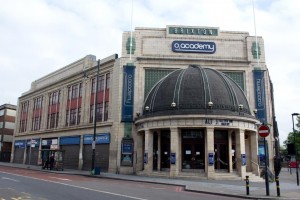
‘I really expected to be laughed out of the office. But what I didn’t fully appreciate, not being from London, was that no one wanted to know about Brixton at the time. They couldn’t get rid of this venue. No one believed that music fans would ever come to Brixton to see a gig – or that bands would ever agree to play there. This was in 1983, a year after the riots. There were still burned out buildings around the area.’
‘I didn’t care about any of that – I just loved the venue. But they sold it to me out of desperation, not exactly belief that I could pull this off.’
Life at the Academy
But having made it work and seen so many bands come onto the Academy stage is it possible to have a favourite?
‘That is too hard. We had so many amazing shows at the Academy. From the reggae acts like Burning Spear to amazing punk bands like The Clash. The Smith’s final ever gig. A lot of the early Hip Hop shows in the UK, such as the incredible double bill of Run DMC and Beastie Boys with go-go dancers onstage.’

‘And The Rolling Stones are pretty hard to beat. They were coming off a stadium tour playing to 80,000 people a night, and told us they wanted to do an “intimate club show”. Only the Stones could call playing to 5,000 people at the Brixton Academy a club show!’
I asked Simon to describe an image from his memories of running the Academy that he thinks will stay with him forever.
‘Tough question. There are so many to choose from. Our breakthrough gigs were probably with The Clash in 1984. Few things can beat seeing The Clash running onstage, tearing straight into those staccato opening chords of London Calling, and 5,000 people just exploding with energy. That’s pretty breath-taking.’
‘On the other hand, the image of a gun being held in my face by a Yardie gangster will probably live in the memory too!’
And there are moments of real chaos in the book: from getting held to ransom by ragga badboy Buju Banton for an extra £10k while the crowd waited for him to come on stage, to dealing with the untimely suicide of Kurt Cobain in the run-up to a four-night Nirvana stint at the Academy.
The latter is an incredible story. Facing the financially ruinous prospect of refunding the shows, Simon took the opportunity of a live Radio One interview with Zoe Ball to invent demand for the tickets as historic memorabilia. The result was that not only did few people request a refund, but frantic bidding wars started over the tickets, saving the future of the Academy.
The book also covers Simon’s personal experience of a broader trend: the commercialisation of the live music scene in the UK. Parkes writes about his concerns over ‘corporate lawyers and graphpaper brained financiers’ who would never understand the soul of the business – or how you might have to give some Madchester scenester a couple grams of coke to secure Black Grape for a three-night stint (true story).
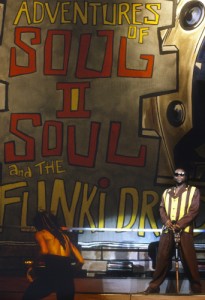
‘The music business is so different now, much more controlled by one or two giant companies. The idea that some loony kid could come along, offer a pound, and end up changing the whole music scene is almost unthinkable. But I’d like people to think it anyway. I did it against the odds – and I’d love to feel a bit of that madness and possibility back in the scene today – a bit of the anarchic spirit of those times.’
Family Life
Simon still lives in Brixton with his family. And it’s clear that his love for the area hasn’t waned. ‘So much has gone on and changed,’ he tells me, ‘and yet Brixton is still Brixton. This area can still surprise you.’
‘Obviously Brixton in the 80s and early 90s was run down, poor and violent. But I also had an amazing time here. People, and especially the media, tend to talk about how dangerous it was – but we had a lot of fun as well. There was a real vibe, especially at those early reggae gigs at the Academy. It was edgy, but exciting.’
Naturally, the dynamic music scene is just another thing which keeps Parkes in the area: ‘The music scene in Brixton is always buzzing. There’s too much of a cultural mix here for it not to be.’
‘Of course it’s amazing that all the new food places have popped up, and the area seems to be getting more affluent. But, like I say, scratch the surface and the old Brixton is still there – especially if you know where to look.’
Ultimately, Parkes says, the book is ‘in a way, a story about Brixton itself’.
‘It’s about the vibe of the area, about the people here, about how the area has changed and how it has stayed exactly the same. And how music has been part of that the whole way. In Brixton the soundtrack is always brilliant!’
Live at the Brixton Academy by Simon Parkes with JS Rafaeli is published by Serpent’s Tail
Live photos by Justin Thomas: www.justinthomasphotography.co.uk

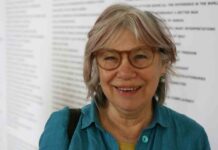







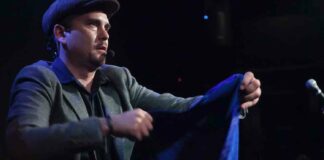








[…] running the Brixton Academy, having bought the venue for just £1 as a 23-year-old (you can read our interview with Simon Parkes here). In the delightfully suspenseful chapter, a young Parkes is faced with the dilemma of whether […]